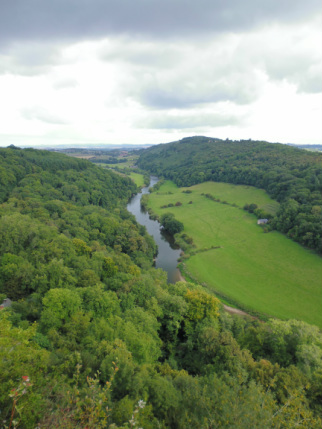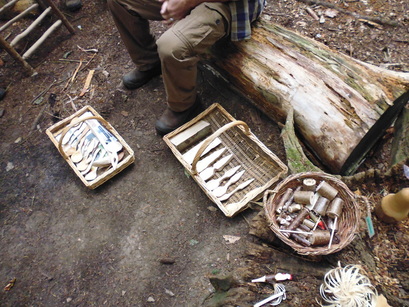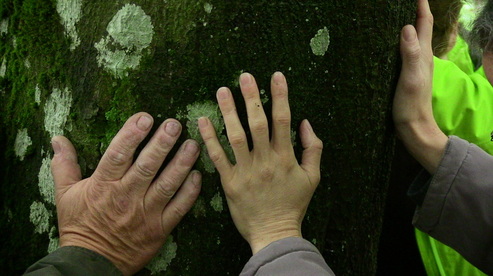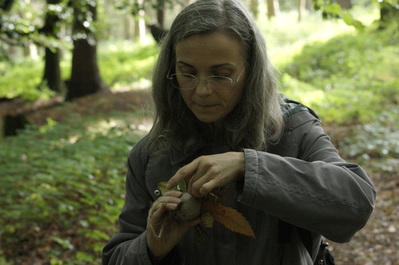
Our workshop is located in two centres which rely on the nature of the forest to attract business of one kind or another – the trees as economic and aesthetic agents. We hear from Wye Valley AONB staff about how that agency is involved in a number of endeavours in which, again, the trees and the spaces they make, are players.
But all that – so far – is more or less is pretty standard social construction of trees forests type stuff, with a general attention to the trees as agents folded into it.
What about the trees themselves. Trees as individual agents – trees as participants in the creation of knowledge?
Well – in the bodging (a technical term) of the spoons we began to engage with the ‘flesh’ or body of a particular (youngish) cherry tree which have been felled to produce workable timber. To me this exercise began to open up the precise nature of tree anatomy in terms of grain, growth rings etc. We begin to know the tree through its flesh. Of course we are no experts – (although some very nice spoons were produced) but our tutor was. And this speaks to the whole history and geography of wood craft and technology where specific types of trees and their timber and the characteristics they possess, have formed into precise formations of nature-culture.
So – what is in it for the trees? Well, all organisms need a niche in ecological terms, their dwelt, but in the anthropocene, niches can be as much economic and cultural as they are ‘of nature’. Landscape conservations conventions, such as those of the EU, are now paying attention not only to ecological biodiversity but also cultural and ecological diversity and how the these can intersect into wider flourishing of eco-social diversity . Craft and wood technologies/economies are vital for tree biodiversity and in term the survival and flourishing of tree species.
After the bodging, we did a series of exercises which involved being with(in) the trees. Listening, looking, touching, playing with - trying to get a sense of the everyday practices, day to day lives, of individuated trees, trying to get a sense of the space as performed by them (e.g.) looking at the canopy in mirrors, filming the canopy in parallax (Owain). In other words, we took time to get close to trees, to change our normal ways of engaging with a research other. These aspects of simply ‘getting close to’ and ‘giving time to’ seem important elements of co-production of knowledge with both humans and non-human. These need to be leavened other inputs - witnessing, empathy, and ranges of knowledges which can range from craft to science, to that of other tree space users.



 RSS Feed
RSS Feed
